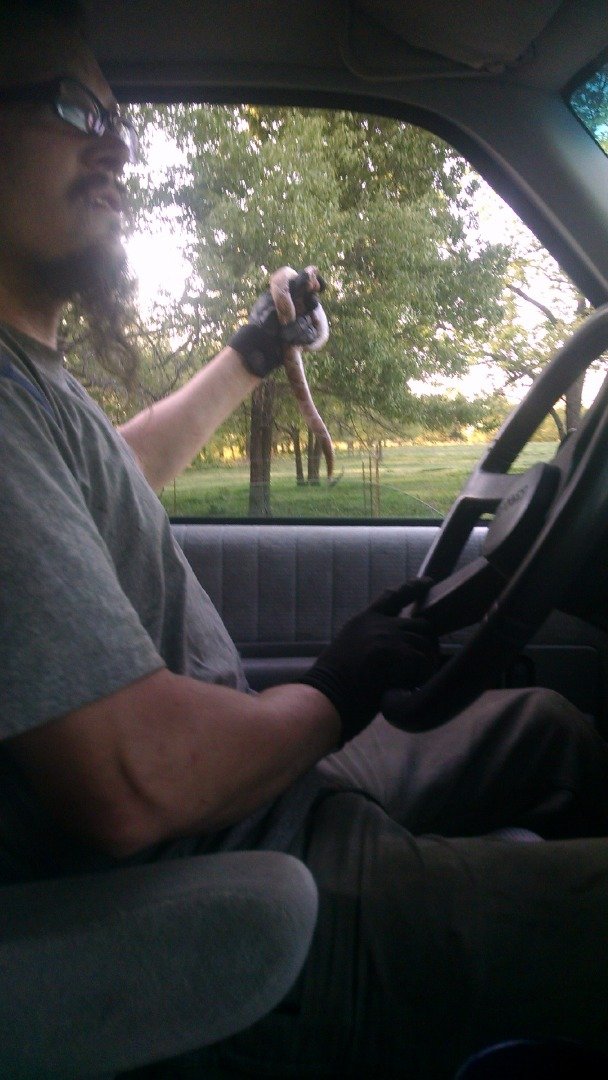
This Copperhead Snake was the first venomous snake I ever found in the wild. Although two species of rattlesnakes exist back in Wisconsin, I never saw either, and when I lived in New Orleans, the only ones I saw out in the bayou were in Animal Refuge Areas.The copper colored head, the cat-like eyes, and the "hershey kiss"-shaped pattern on the side are all characteristic of copperheads. Though he never bit me, some venom may have leaked into an open would causing some swelling, discomfort, and fear for a few days. Overall this snake was not this bad to interact with, and was not all that defensive either, but I have been interacting with wildlife in this manner for decades, so do not try to capture, handle, or relocate venomous snakes. Usually, if you go away, they will too. Many that I catch I have to chase down first. Generally, a wild snake will run away from you or try to hide.
THREE PIECES OF WORTHWHILE INFORMATION
There are no poisonous snakes, they are all edible, and surprisingly easy to skin and prepare.
There are only four "kinds" of venomous snakes indigenous to the United States: Water Moccasins (AKA Cottonmouths), Copperheads, Coral Snakes, and Rattlesnakes. Different species of Rattlesnakes and Coral snakes exist, but these are the only "kinds" of indigenous snakes with venom.
In some states it is illegal to kill snakes, and many species are endangered, threatened, or protected. Know the laws, rules, and regulations prior to interacting with wild animals. (It is illegal to possess some species in some places, even if you just picked it up off the ground a minute ago.) It is illegal in Arkansas to kill a snake unless it is a life or death situation, and most situations are not life or death.

